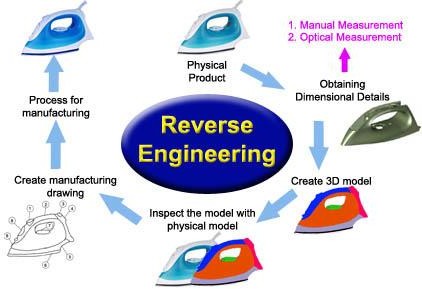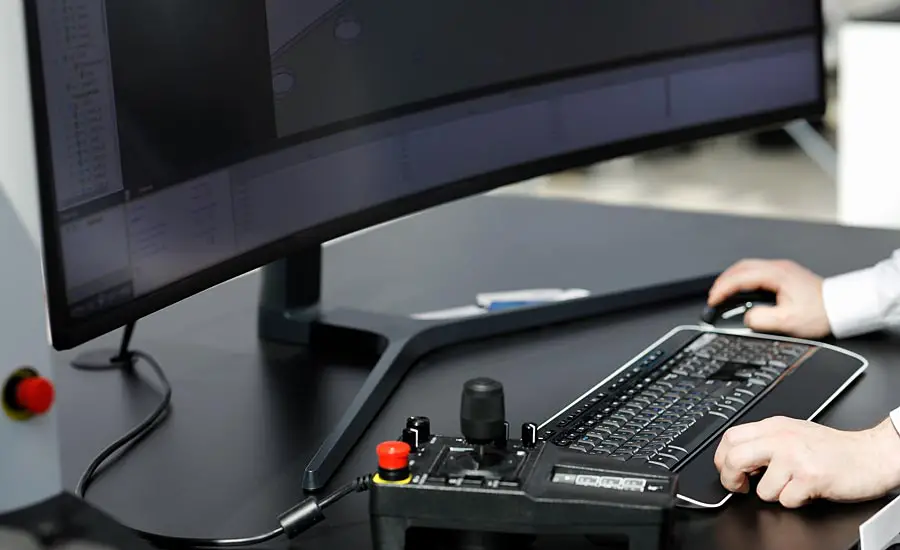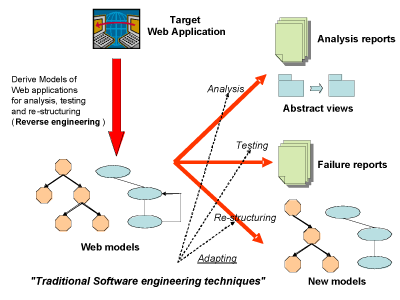Reverse Engineering for Software Applications

Reverse engineering is the process of understanding an existing software system by analyzing its structure, behavior, and code. It involves taking apart a software application to uncover its design, implementation, and functionality. The process is used for a variety of purposes, including:

- Maintenance: Reverse engineering can help software engineers maintain and update existing systems. By understanding the code, they can more easily fix bugs, add new features, and make other changes.
- Security: Reverse engineering can be used to identify security vulnerabilities in software. By examining the code, security engineers can find potential weaknesses that could be exploited by attackers.
- Performance: Reverse engineering can help software engineers improve the performance of existing systems. By understanding how the code works, they can identify bottlenecks and make changes to improve efficiency.
- Legal: Reverse engineering can be used for legal purposes, such as determining the ownership of intellectual property. By examining the code, lawyers can find evidence of copyright infringement or other violations of law.
The process of reverse engineering typically involves the following steps:

- Decompilation: The first step is to decompile the software application into its source code. This can be done using a variety of tools, such as IDA Pro or Ghidra.
- Analysis: Once the code has been decompiled, it is analyzed to understand its structure, behavior, and functionality. This can be done manually or with the help of automated tools.
- Documentation: The results of the analysis are documented in a report or other form of documentation. This documentation can be used for a variety of purposes, such as maintenance, security, or legal proceedings.
Reverse engineering is a complex and challenging process, but it can be a valuable tool for software engineers, security researchers, and other professionals. By understanding the code, these professionals can gain a deep understanding of how software systems work and make informed decisions about how to use, maintain, and secure them.# Reverse Engineering For Software Applications
Executive Summary
Reverse engineering is the process of analyzing a software application to understand its design, functionality, and implementation. This information can be used for a variety of purposes, such as:
- Improving the software’s performance or security. By understanding how a software application works, developers can identify areas for improvement.
- Creating new software that is compatible with the existing application. By understanding the interfaces and protocols used by a software application, developers can create new software that can work with it.
- Protecting the software from unauthorized access or modification. By understanding how a software application works, organizations can identify and mitigate potential security vulnerabilities.
Introduction:
Reverse engineering is a complex and challenging process, but it can be a valuable tool for understanding and improving software applications. There are a number of different techniques and tools that can be used for reverse engineering, and the best approach will vary depending on the specific software application being analyzed.
FAQ
-
What are the benefits of reverse engineering?
Reverse engineering can provide a number of benefits, including:
- Improved understanding of the software’s design, functionality, and implementation
- Identification of areas for improvement
- Creation of new software that is compatible with the existing application
- Protection of the software from unauthorized access or modification
-
What are the challenges of reverse engineering?
Reverse engineering can be a complex and challenging process, due to a number of factors, including:
- The complexity of the software application being analyzed
- The lack of documentation or source code for the software application
- The use of proprietary or obfuscated code in the software application
-
What are the different techniques and tools that can be used for reverse engineering?
There are a number of different techniques and tools that can be used for reverse engineering, including:
- Disassembly
- Decompilation
- Debugging
- Profiling
- Static analysis
- Dynamic analysis
Top Five Subtopics
1. Decompilation
Decompilation is the process of translating compiled code back into a human-readable form. This can be done using a variety of tools, such as Ghidra, IDA Pro, and Hopper. Decompilation can be a useful technique for understanding the design and functionality of a software application.
Important Pieces
- Disassembler: A disassembler is a tool that translates compiled code into assembly language.
- Decompiler: A decompiler is a tool that translates assembly language into a higher-level programming language.
- Symbol table: A symbol table is a data structure that stores the names and addresses of symbols in a program.
- Control flow graph: A control flow graph is a graph that represents the flow of control in a program.
- Data flow graph: A data flow graph is a graph that represents the flow of data in a program.
2. Debugging
Debugging is the process of identifying and fixing errors in a software application. This can be done using a variety of tools, such as GDB, LLDB, and Valgrind. Debugging can be a useful technique for understanding the behavior of a software application and identifying potential problems.
Important Pieces
- Breakpoint: A breakpoint is a point in a program where execution can be paused.
- Watchpoint: A watchpoint is a point in a program where a variable can be monitored.
- Stack trace: A stack trace is a list of the functions that have been called in a program.
- Core dump: A core dump is a snapshot of the memory of a program.
- Heap dump: A heap dump is a snapshot of the heap memory of a program.
3. Profiling
Profiling is the process of collecting data about the performance of a software application. This data can be used to identify bottlenecks and areas for improvement. Profiling can be done using a variety of tools, such as perf, VTune, and gprof.
Important Pieces
- CPU profiling: CPU profiling collects data about the amount of time that a program spends executing.
- Memory profiling: Memory profiling collects data about the amount of memory that a program uses.
- I/O profiling: I/O profiling collects data about the amount of time that a program spends reading and writing data.
- Network profiling: Network profiling collects data about the amount of time that a program spends sending and receiving data over the network.
- Database profiling: Database profiling collects data about the amount of time that a program spends accessing a database.
4. Static Analysis
Static analysis is the process of analyzing a software application without executing it. This can be done using a variety of tools, such as lint, cppcheck, and PMD. Static analysis can be a useful technique for identifying potential errors and security vulnerabilities in a software application.
Important Pieces
- Data flow analysis: Data flow analysis tracks the flow of data through a program.
- Control flow analysis: Control flow analysis tracks the flow of control through a program.
- Taint analysis: Taint analysis tracks the flow of tainted data through a program.
- Vulnerability analysis: Vulnerability analysis identifies potential security vulnerabilities in a program.
5. Dynamic Analysis
Dynamic analysis is the process of analyzing a software application while it is executing. This can be done using a variety of tools, such as DTrace, SystemTap, and strace. Dynamic analysis can be a useful technique for understanding the behavior of a software application and identificar potential problems.
Important Pieces
- Runtime profiling: Runtime profiling collects data about the performance of a program while it is executing.
- Trace analysis: Trace analysis collects data about the system calls and other events that occur when a program is executing.
- Memory analysis: Memory analysis collects data about the memory usage of a program while it is executing.
- Network analysis Network analysis collects data about the network activity of a program while it is executing.
- Database analysis: Database analysis collects data about the database activity of a program while it is executing.
Conclusion
Reverse engineering is a complex and challenging process, but it can be a valuable tool for understanding and improving software applications. There are a number of different techniques and tools that can be used for reverse engineering, and the best approach will vary depending on the specific software application being analyzed.
Relevant Keywords
- reverse engineering
- software applications
- decompilation
- debugging
- profiling
- static analysis
- dynamic analysis
